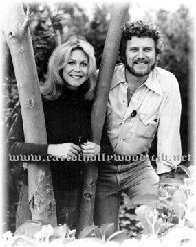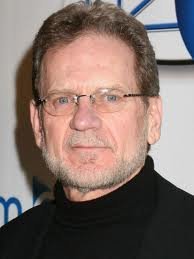A doughnut or donut is a type of food made from leavened fried dough. It is popular in many countries and is prepared in various forms as a sweet snack that can be homemade or purchased in bakeries, supermarkets, food stalls, and franchised specialty vendors. Doughnut is the traditional spelling, while donut is the simplified version; the terms are used interchangeably.
Doughnuts are usually deep fried from a flour dough, but other types of batters can also be used. Various toppings and flavorings are used for different types, such as sugar, chocolate or maple glazing. Doughnuts may also include water, leavening, eggs, milk, sugar, oil, shortening, and natural or artificial flavors.
The two most common types are the ring doughnut and the filled doughnut, which is injected with fruit preserves (the jelly doughnut), cream, custard, or other sweet fillings. Small pieces of dough are sometimes cooked as doughnut holes. Once fried, doughnuts may be glazed with a sugar icing, spread with icing or chocolate, or topped with powdered sugar, cinnamon, sprinkles or fruit. Other shapes include balls, flattened spheres, twists, and other forms. Doughnut varieties are also divided into cake (including the old-fashioned) and yeast-risen doughnuts. Doughnuts are often accompanied by coffee or milk. They are sold at doughnut shops, convenience stores, petrol/gas stations, cafes or fast food restaurants.
The cookbook Küchenmeisterei (Mastery of the Kitchen), published in Nuremberg in 1485, offers a recipe for "Gefüllte Krapfen", sugar free, stuffed, fried dough cakes.
Dutch settlers brought olykoek ("oil(y) cake") to New York (or New Amsterdam) in the early 18th century. These doughnuts closely resembled later ones but did not yet have their current ring shape.
A recipe for fried dough "nuts" was published, in 1750 England, under the title "How to make Hertfordshire Cakes, Nuts and Pincushions”, in The Country Housewife’s Family Companion by William Ellis.
A recipe labelled "dow nuts", again from Hertfordshire, was found in a book of recipes and domestic tips written around 1800, by the wife of Baron Thomas Dimsdale, the recipe being given to the dowager Baroness by an acquaintance who transcribed for her the cooking instructions for a "dow nut".
The first cookbook using the near conventional "dough nuts" spelling was possibly the 1803 edition of "The Frugal Housewife: Or, Complete Woman Cook", which included dough nuts in an appendix of American recipes.
One of the earliest mentions of "dough-nut" was in Washington Irving's 1809 book A History of New York, from the Beginning of the World to the End of the Dutch Dynasty:
The name oly koeks was almost certainly related to the oliekoek: a Dutch delicacy of "sweetened cake fried in fat."
The Hole
Daniela Galarza, for Eater, wrote that "the now-standard doughnut’s hole is still up for debate. Food writer Michael Krondl surmises that the shape came from recipes that called for the dough to be shaped like a jumble – a once common ring-shaped cookie. In Cuisine and Culture: A History of Food and People, culinary historian Linda Civitello writes that the hole was invented because it allowed the doughnuts to cook faster. By 1870 doughnut cutters shaped in two concentric circles, one smaller than the other, began to appear in home-shopping catalogues".
Hanson Gregory, an American, claimed to have invented the ring-shaped doughnut in 1847 aboard a lime-trading ship when he was 16 years old. Gregory was dissatisfied with the greasiness of doughnuts twisted into various shapes and with the raw center of regular doughnuts. He claimed to have punched a hole in the center of dough with the ship's tin pepper box, and to have later taught the technique to his mother. Smithsonian Magazine states that his mother, Elizabeth Gregory, "made a wicked deep-fried dough that cleverly used her son's spice cargo of nutmeg and cinnamon, along with lemon rind," and "put hazelnuts or walnuts in the center, where the dough might not cook through", and called the food 'doughnuts'.
If you want to read a lot more, go here:
https://en.wikipedia.org/wiki/Doughnut
- 1 (8-ounce) package cream cheese, softened
- 3 tablespoons sugar
- 6 to 8 glazed donuts (depending on size)
- 6 eggs
- 1 1/4 cups milk
- 1 teaspoon vanilla extract
- 1 teaspoon ground cinnamon
- 1/8 teaspoon salt
- Coat a 9- x 13-inch baking dish with cooking spray. In a medium bowl, mix cream cheese and sugar.
- Cut each donut in half and place bottom half in baking dish. Evenly spread cream cheese mixture over donut bottoms. Place remaining donut halves over cream cheese.
- In a large bowl, whisk eggs, milk, vanilla, cinnamon, and salt; evenly pour over donuts. Cover and refrigerate overnight.
- When ready to bake, preheat oven to 350º.
- Uncover baking dish and bake 35 to 40 minutes, or until firm in center.
And births this date include...

1957 – Lyle Lovett, American singer
Books have a mind of their own. They take time to develop, research, draft, edit, revise, and rewrite. We devour stories. We indulge in them as we drift off to sleep or travel. And sometimes, we allow them to collect dust on several flat surfaces in our homes. Those stories may take years to reach a publisher and just as long to reach a bookshelf. We may have only one favorite author or many collected works with which we cannot part. Whether we prefer fiction, non-fiction, or a mix of both, authors have been telling stories to fill our heads for thousands of years.
Authors also keep a record of history through their stories. They mark time through their observations. Their tales create remarkable memories of a place, sealing it between the pages of the binding. Their books allow us to keep coming back to visit again and again.
After her grandmother’s death in 1968, Sue Cole promoted the observance of National Authors Day. She urged people to write a note to their favorite author on November 1, to “brighten up the sometimes lonely business of being a writer.” She also suggested flying the American flag as another way of showing appreciation for the writers who have created American literature.
HOW TO OBSERVE
Purchase some books by your favorite author to support them. Share your favorite novels online while encouraging an aspiring author.
NATIONAL AUTHOR’S DAY HISTORY
In 1928, Nellie Verne Burt McPherson, president of the Bement, Illinois Women’s Club, had an idea of setting aside a day to celebrate American authors. McPherson was a teacher, and throughout her life, an avid reader. While she was recuperating in the hospital during World War I, she wrote a fan letter to fiction writer, Irving Bacheller. She told him how much she enjoyed reading his story Eben Holden’s Last Day A’ Fishin.
Upon receiving her letter, Bacheller sent her an autographed copy of another story. It was then that McPherson realized she would never be able to thank him adequately for his gift. McPherson decided to show her appreciation by submitting an idea for a National Author’s Day to the General Federation of Women’s Clubs. In May of 1929, the club endorsed a resolution for National Author’s Day to be observed honoring American writers. The United States Department of Commerce recognized this day in 1949.
FAQ
Q. Do I have to be published to be considered an author?
A. No. If you created an original article, poem, story, or other written work, you are an author.
Q. How do I show appreciation to my favorite author?
A. First, read the author’s books. But you’re already doing that. You should also share the books with others. Other ways to support an author is by:
- Writing a review on their author page where the book is sold.
- Read the author’s older works.
- Follow them on their social media pages.
Q. How are books organized in a library?
A. Most libraries use either the Library of Congress Classification System or the Dewey Decimal System. Books are first classified by topic and subtopics or genre. Librarians then shelve the books in alphabetical order by title or author’s last name.
Q. What’s the difference between an inscribed copy of a book and a signed copy?
A. An inscribed copy includes a short message to someone along with the author’s signature. A book with an author’s signature is simply signed. However, there are different ways a book may be signed and different types of inscriptions, too.







,_Westport,_CT_06880_USA_-_Feb_2013.jpg)







No comments:
Post a Comment